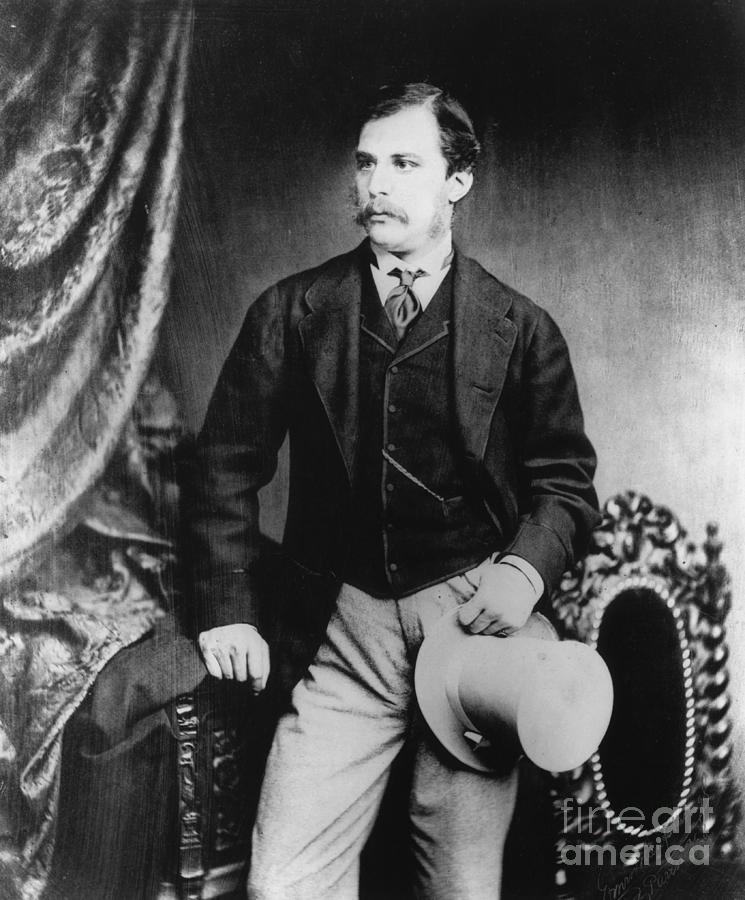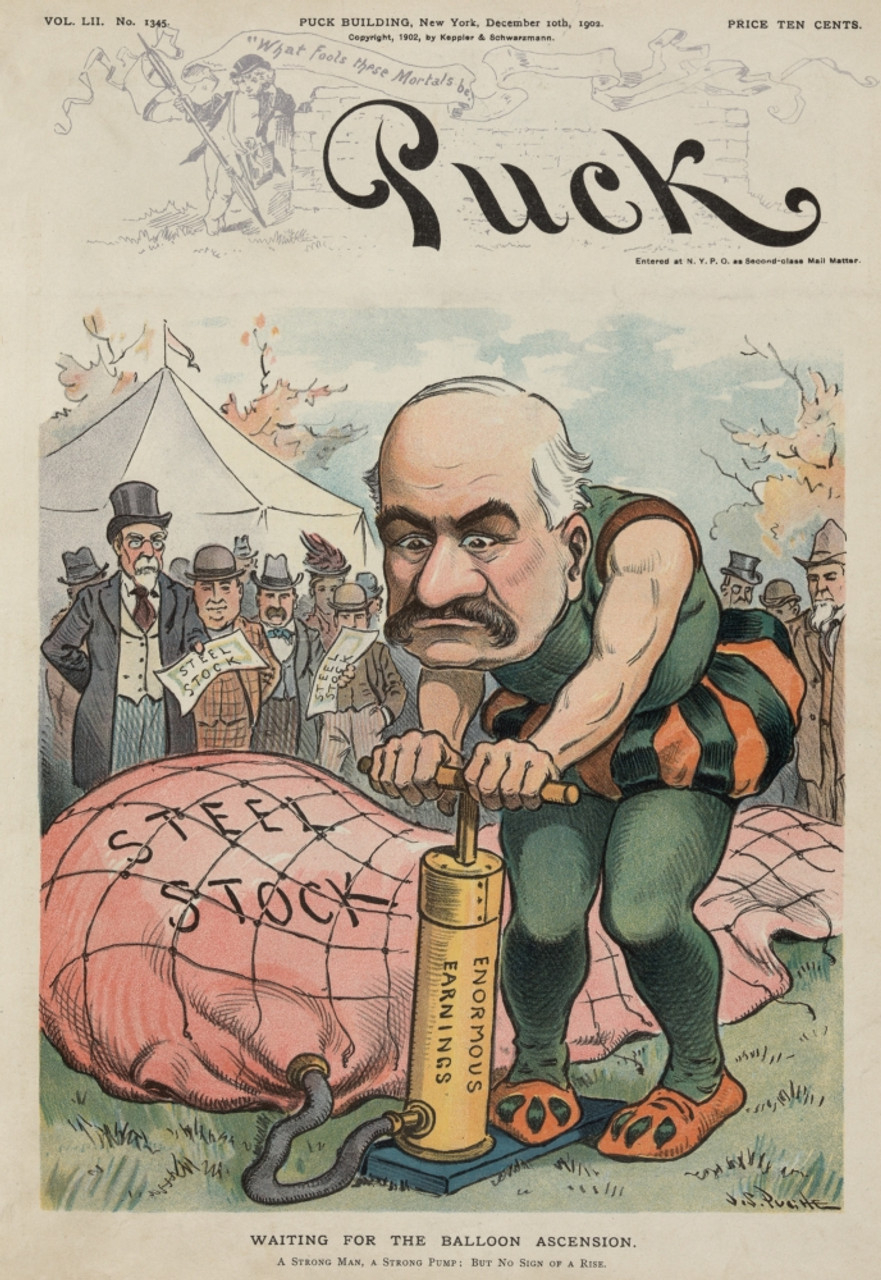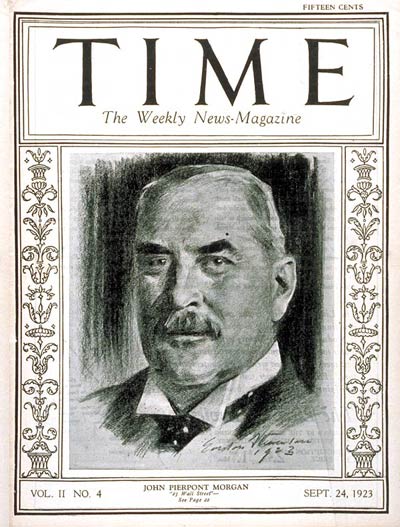J.P. Morgan
“I owe the public nothing.” – J.P Morgan
John Pierpont Morgan became the richest man in the United States as a financier and industrial organizer. He was born on April 17, 1837 in Hartford Connecticut to a successful financier and used his family’s wealth to evade military service during the Civil War. began his career in 1857 as an accountant and by 1861 was working for his father’s banking company in New York City. In 1871, Morgan was made a partner at the firm Drexel, Morgan and Company which became the predominant source of government financing. After Drexel’s death in 1895, Morgan reorganized the firm to be just J.P. Morgan and Company and it became one of the most powerful banking houses in the world.

Young John Pierpont Morgan
He used his wealth and his contacts to invest in burgeoning industrial technology, such as the railroads. He reorganized railroad corporations and consolidated them, and became a board of director of several. After a financial panic of 1893, Morgan was able to buy up more railroad companies, and by 1902 he controlled over 5,000 railroad miles. An economic depression following a financial panic also allowed Morgan to finance consolidations of corporate industrial manufacturing companies. He merged multiple electric companies into General Electric and cornered the electrical equipment market. In 1901 he merged steel companies together to create the United States Steel Corporation, which became the world’s first billion dollar corporation. He bought several agricultural-equipment manufactures and created the International Harvester Company. His consolidations and control of these various industries allowed him to create monopolies and wield outsize control of entire economic markets, setting prices and cutting wages to maximize profit.

Time Puck political cartoon from 1902
After a stock market panic in 1907, Morgan pledged his own money to the United States government to stabilize the economy. He was deeply embittered by what he perceived as a lack of gratitude from the populace. However, he also used the opportunity to turn his attention to consolidating financial firms and banks. Finally, his consolidation of entire industries sparked anti-trust legislation and he was forced to relinquish some of his monopolies, such as United States Steel and the Northern Securities Railroad. Furious by these setbacks, Morgan moved to Europe, where he maintained a significant concentration of control over the entire economy until his death on March 31, 1913.
In his personal life, Morgan married twice. His first marriage to Amelia Sturges ended after only four months after her untimely death in 1861. Morgan then married Frances Louisa Tracy in 1865 and they had four children.

Time Magazine cover from September 1923
Morgan’s influence on the economy is still felt to this day. His banking empire was broken apart into three separate banks, but two are all still around: J.P. Morgan Chase and Morgan Stanley (the third Morgan Grenfall was acquired by Deutsche bank in 1990). He amassed a large private art collection and his estate donated 7,000 pieces to the Metropolitan Museum of Art. His private library became a New York City landmark in 1982.